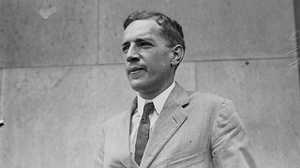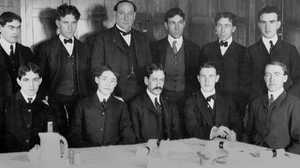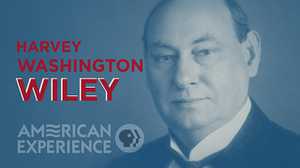The Great Electric Sugar Con
Uncovering the Bitter Truth Behind a Sweetening Scam
In early January 1889, “Professor” Henry C. Friend’s sugar con came to a crashing halt. Friend, who sometimes went by Freund and who wasn’t a professor, swindled investors for several years with his evocatively named Electric Sugar Refining Company. The faux operation ran at 18 Hamilton Avenue in present-day Red Hook, Brooklyn in a grand brick-façade factory, a “big building” that had formerly housed the Atlantic Flour Mills. To a weary public so steeped in daily news about food frauds that they called it the Era of Adulteration, Friend took the crown as yet another challenger to authenticity with “the most successful, audacious, and ‘barefaced’ swindle of the present generation.” More than a local scam, his secret electrical refining process was “the bugbear of the sugar trust.” It was ultimately his undoing.

The historical record is unclear about Friend’s actual heritage and origins. The “Friend” versus “Freund” confusion was one he perpetuated in his signature, not just a result of poor reporting in the papers. His claims to be a German chemist were likely an intentional maneuver that fit the cult of scientific personality he built through the “professor” title.
Before his downfall, bystanders were apparently unaware of Friend’s criminal past—he had been arrested for embezzlement in Chicago in 1882—and took great interest watching him rehabilitate the closed facility on Hamilton Avenue. He scaled up the factory and brought in investors from England and the United States. Of the 10,000 shares offered to capitalize the venture, he kept 6,000. Three thousand went to English investors. One thousand went to his company’s president, an old associate from his nefarious Chicago days. All this investment, hundreds of thousands of dollars[KB1], was bankrolled on the promise of a secret electrical process meant to change the sugar industry.
This is how the con worked: Friend and his accomplices set up a room with a machine covered by cloth. The machine was supposedly an electrical processor that would act on the sugar to refine it from raw to high-quality pure sugar. Since this “mysterious something carefully covered up” was a secret as yet unpatented—or not patentable, Friend told investors—he couldn’t allow others to see it. “In order to convince skeptical sugar men and inquiring capitalists that the thing would work,” one newspaper reported, “he invited a number of them to witness the operation of refining sugar.” Visitors and potential investors would tour the room to see the machinery, which included crushers, chutes, sieves, belted wheels, wooden barrels, bins and centrifuges. After the tour, the “investigators were turned out of the room and the door locked behind them.” Friend then ran his “electrical” process and invited the men back in. When they returned, they found that “the clean barrels were full of the finest quality of hard sugar.” His “presto-change performance” turned empty barrels, Rumpelstiltskin-style, into bins of gold in the form of highly refined sugar, all accomplished with the fantastical electrical process. The process was so bewildering, the boldness so captivating, that newspapers across the country reprinted and spread the story.
What actually happened behind the scenes was this: Friend had the refined sugar already on hand but concealed out of sight. Nothing actually went on under that covered machine. There was no electrical process to speak of. Rather, once the room was empty, Friend and colleagues would simply dump the hidden refined sugar down chutes “through an arrangement of nine sieves,” into the barrels. The raw sugar waiting for refinement was emptied through a side chute and whisked away to another room. It was audacious and, for several years, convincing.
In other cases of confidence schemes at the time, offenders might slip out the back door only to be tracked down in faraway climes. (The Daily Eagle, for instance, compared Friend to another great food fraudster of the age, Alfred Paraf, who had booked it to South America to evade the consequences of his scheming.) Friend had no escape but the grave. He was known for his taste in expensive brandy and passed away in March 1888, reportedly of an illness brought on by alcoholism. Even then some observers, like Harper’s Weekly, didn’t believe it: “at least it is supposed he died.”
The swindle was exposed nine months later after Friend’s wife Olive left the factory for her hometown in Michigan. Her fleeing left investors, most of them foreign, many of them from Liverpool, high and dry. The police set up a sting to catch Olive, her family and two co-conspirators. They tracked her back to Michigan, staked out Detroit ports, and ensnared the criminals in an ever-tightening dragnet. In mid-February 1889, the New York Police arrested the electric refining “sharps.”
Henry C. Friend’s scam was both newsworthy and titillating while, in the end, not entirely shocking to a wary public. Here was a man tapping into the era of adulteration with a new sugar operation. His electric connection set him well within the Edisonian age, too, so much so that competitors fearing “the Friend Process” wrote Edison himself to ask how it was done. To his credit, Edison had his office reply that electricity could bleach sugar, but he knew of no process to refine it.
Meanwhile, the United States Department of Agriculture’s chief chemist, Harvey Wiley, had been working to define the thin healthy line between pure and adulterated for years. An early priority for the USDA, which was founded in 1862, was to explore sweeteners, and the Department hired the chemist from Purdue in 1882 specifically to investigate the possibilities.
Harvey Wiley would later rise to public fame for his staunch and rabid defense of the public good in the face of adulterated foods, but in the early 1880s, he was dedicated to the more specific focus on alternative sweetener research. As sugar historian Deborah Warner puts it, “Wiley was generally considered the leading sugar expert on the federal payroll. He had studied sugar chemistry and polariscopic analysis in Germany in 1879, and he published polariscopic studies of sucrose and glucose after returning to his position as a professor of chemistry at Purdue University.” Wiley brought attention to the sugar purity question at a moment of public crisis in food confidence. Without such scrutiny, the press feared, unsuspecting eaters might go from the confectionary shop to the grave, as one 1885 cartoon suggested.

Talking about sugar always means talking about culture: plantations and slaves, colonialism and empire, taste, nutrition, diet, commodity economics, science, cultivation. With a commodity so complicated and controversial, it is small wonder that the history of sugar would include a swindle as audacious as that of “Professor” Friend and his magical, electrical refining process.

Benjamin R. Cohen is an associate professor at Lafayette College in Easton, PA. He is the author of Pure Adulteration: Cheating on Nature in the Age of Manufactured Food (2020) and Notes from the Ground: Science, Soil & Society in the American Countryside (2009), and writes widely on the history of food, the environment, science, and technology.
Reprinted with permission from Pure Adulteration: Cheating on Nature in the Age of Manufactured Food by Benjamin R. Cohen, published by the University of Chicago Press © 2019. All rights reserved.









